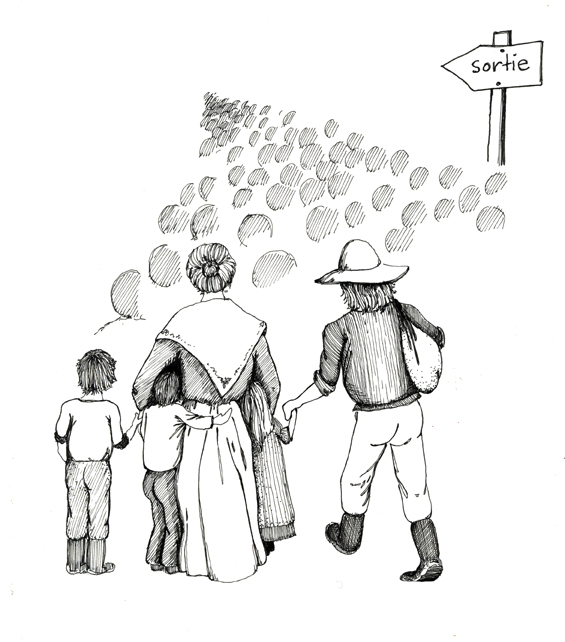The French Canadian Migration

Drawing: Ann Leduc
Date: Around 1983
Source: Société d’histoire de la Rivière-du-Nord, Archistoire Fonds
Classification mark: P041,D10
The migration of French Canadians to the United States began around the 1830s. In 1863, when Antoine Labelle was made the parish priest of Saint-Bernard-de-Lacolle, a community just north of the U.S., he was dismayed at the sight of so many workers leaving the country to seek their fortunes south of the border. Despite this, he himself thought of emigrating there, to sustain the faith of the growing Francophone Catholic population. Instead, the Bishop of Montreal, Monseigneur Ignace Bourget, offered to appoint him as curé of a small but fast-growing parish: Saint-Jérôme. The idea of keeping the French Canadians at home began to take shape. And Curé Labelle would make it his life’s work.

